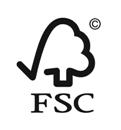
Q: What is pre-consumer waste?
A: Pre-consumer materials are those that have not met their intended end-use by a consumer and include allowable waste left over from manufacturing, converting, and printing processes. Examples: mill-converting scraps, pre-consumer de-inking material, pulp substitutes. Magazines and newspapers that were never bought also are termed pre-consumer.
Q: What is de-inked pre-consumer waste?
A: This paper has been printed but not used by consumers, such as waste from printers and unsold magazines and publications. It is processed like post- consumer waste and is de-inked for reuse.
Q: What is post-consumer waste?
A: This is paper that has already been used and returned through a recycling program, thereby diverting it from a landfill or incinerator. It is usually de-inked and then processed to make new paper. Office paper waste makes up the majority of post-consumer waste content that is used to make recycled copy and printing papers.
Q: How is recycled paper made?
A: Recycled paper, either pre or post-consumer materials needs to be washed and is often de-inked prior to being pulped. The pulp goes through a bleaching process to make it whiter. There are many bleaching processes used by different paper manufactueres. Once the pulp is bleached, it enters a series of phases including the following: the paper forming section; the press section where water is removed by pressing the wet paper between rolls and felts; and the drying section where the moisture content is reduced to the desired level; and the calendering section where the paper is compacted and smoothed progressively as it travels down a stack of steel rolls. Once completed the paper is stored in either rolls or cut into sheets.
Q: What is de-inking?
A: The de-inking process removes applied inks, finishes, glues, and other contaminants from wastepaper in order to extract the cellulose fiber. Typically this requires extensive processing through a variety of pulping, screening, cleaning, washing, and/or floatation equipment.
Q: What does processed chlorine free mean?
A: Processed chlorine free refers to recycled paper in which the recycled content is unbleached or bleached without chlorine or chlorine derivatives. Dioxins and other toxins and pollutants created by chlorine and its derivatives are often referred to as chlorinated organic compounds. The dioxins have been associated with adverse affects on the immune and reproductive systems of human as well as those of fish and wildlife species.
Q: What is elemental chlorine free?
A: Elemental chlorine fee applies to paper processed without elemental chlorine but with a chlorine derivative such as chlorine dioxide. Although less harmful than using chlorine, it is still considerably worse than totally chlorine free.
Q: What is totally chlorine free?
A: Totally chlorine free applies to virgin fiber papers that are unbleached or processed with a sequence that includes no chlorine or chlorine derivatives.
Q: What is virgin fiber?
A: Virgin fiber is fiber that has never been used before in the manufacture of paper or other products.
Q: What is agricultural byproduct?
A: Agricultural byproducts are fibrous byproducts of agriculture, such as cereal straws and corn stalks, which have previously been treated as a waste stream. These materials are routinely burned or flooded from fields, wasting hundreds of thousands of pounds of a valuable resource and damaging the environment. Using agricultural byproducts means turning a waste stream into a resource.
Q: What is non-wood or tree-free fiber?
A: Non-wood or tree-free fiber refers to fiber that comes from sources other than trees, such as agricultural by products, kenaf, and hemp. These fiber sources are commonly used in other parts of the world, and can be cultivated here to help reduce pressure on forest lands.
Q: What is sustainably harvested virgin fiber?
A: No matter how well we recycle, the paper industry will always require some virgin fiber. Both trees and non-wood fibers can be cultivated as sustainable sources of virgin fiber, reducing the need to destroy old growth forests for paper. Additionally, the per-acre fiber yield from some non-wood virgin fibers appears to be higher than that from tree farms.
Q: What is the Forest Stewardship Council?
A: Recently, some United States commercial forests have undergone a sustainable harvest certification process overseen by the Forest Stewardship Council (FSC), a non-profit organization set up to encourage the use of sustainable practices in forestry worldwide.
Courtesy of New Leaf Paper